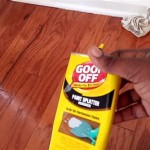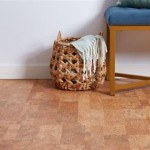How to Remove Contact Adhesive From Concrete Floor
Contact adhesive, commonly used for bonding various materials, can leave stubborn residues on concrete floors. This residue, often sticky and difficult to remove, can be a nuisance, affecting the appearance and functionality of the floor. Removing contact adhesive from a concrete floor requires patience and the right approach. This article outlines the techniques and tools needed to effectively tackle this challenge.
Understanding Contact Adhesive
Contact adhesive, also known as rubber cement, is a potent bonding agent designed to create a strong, permanent bond between surfaces. It dries quickly and forms a robust layer that can be challenging to remove. This adhesive is typically used for projects involving laminates, veneers, and other materials requiring strong adhesion. However, its strong bonding properties pose a challenge when it comes to removal.
Essential Tools and Materials
Before attempting to remove contact adhesive from your concrete floor, gather the necessary tools and materials. These include:
- Scraper: A putty knife or a scraper with a sharp blade is essential for removing the majority of the adhesive.
- Chemical Remover: There are specialized contact adhesive removers available on the market; these are typically solvent-based and designed to break down the adhesive bond.
- Paint Thinner: In some cases, paint thinner can be used as a substitute for specialized removers.
- Safety Equipment: Always wear gloves, eye protection, and a mask when working with chemicals, especially in enclosed spaces.
- Cleaning Supplies: Prepare a bucket of warm water and a cleaning cloth for wiping down the floor after removing the adhesive.
- Sandpaper: Use fine-grit sandpaper to smooth out any rough patches left by the adhesive.
Methods for Removing Contact Adhesive
There are several methods for removing contact adhesive from a concrete floor. Depending on the adhesive's age, thickness, and the surrounding environment, some methods may be more effective than others. Here are the most common approaches:
1. Mechanical Removal
For fresh or partially dried contact adhesive, mechanical removal using a scraper is an effective option. Carefully scrape the adhesive off the concrete surface, working in small sections to avoid damaging the floor. Be cautious as contact adhesive can be tough and may require significant pressure to remove. Utilize a sturdy scraper with a sharp blade for optimal results. This method is best suited for small amounts of adhesive or freshly applied residue.
2. Chemical Removal
For stubborn adhesive that resists mechanical removal, utilizing a chemical remover is the preferred approach. These specialized removers contain chemicals designed to break down the adhesive's bonds, making it easier to remove. The chemical remover should be applied directly to the adhesive, allowed to soak for a few minutes, and then gently scrubbed with a scraper. It's crucial to follow the manufacturer's instructions carefully, especially regarding safety precautions. Ensure adequate ventilation during the application process, as fumes from solvents can be hazardous.
3. Heat Treatment
Heat treatment can sometimes be effective in softening contact adhesive, making it easier to remove. Using a hairdryer or heat gun, apply heat to the adhesive area for a few minutes. The heat will soften the adhesive, allowing it to be scraped off more easily. Exercise caution while applying heat, as excessive heat can damage the concrete floor.
Tips for Ensuring Effective Removal
Here are some additional tips to maximize the effectiveness of contact adhesive removal:
- Test in an inconspicuous Area: Before applying any chemical remover or heat treatment, test the method in an inconspicuous area of the floor to ensure it doesn't damage the surface.
- Work in Small Sections: Tackle the removal process in small sections to ensure thorough cleaning and prevent the adhesive from re-hardening.
- Patience is Key: Removing contact adhesive can be a time-consuming process. Be patient, and work diligently, following the aforementioned methods for optimal results.
- Proper Cleaning: Once the adhesive is removed, clean the area thoroughly with warm water and a cleaning cloth to remove any remaining residue or chemicals.
- Sanding: If the floor surface remains rough after removal, smooth it out with fine-grit sandpaper. This will give the floor a clean finish.
Removing contact adhesive from a concrete floor can be a challenging task, but by following these methods and tips, it can be accomplished effectively. Remember to prioritize safety, wear appropriate protective gear, and always follow the manufacturer's instructions for any chemicals used. With the right approach and diligence, you can remove contact adhesive from your concrete floor and restore its original appearance.

How To Remove Carpet Glue From Concrete 4 Proven Ways Network

How To Remove Carpet Glue From Concrete 4 Proven Ways Network

How To Remove Adhesive From Concrete Floors 5 Diy Ways Get Glue Off

How To Remove Adhesive From Concrete Floors 5 Diy Ways Get Glue Off

Best Ways To Take Out Even Impossible Remove Glue From Floors

How To Remove Carpet Glue From Concrete Floor Step By Guide

How To Remove Carpet Glue From Concrete Floor Step By Guide

How To Remove Old Floor Tile Adhesive All Stripped

How To Remove Adhesive From Concrete Floors 5 Best Ways Get Rid Of Glue On Wood Floor

How To Remove Adhesive From Concrete Floors 5 Best Ways Get Rid Of Glue On Wood Floor
See Also







